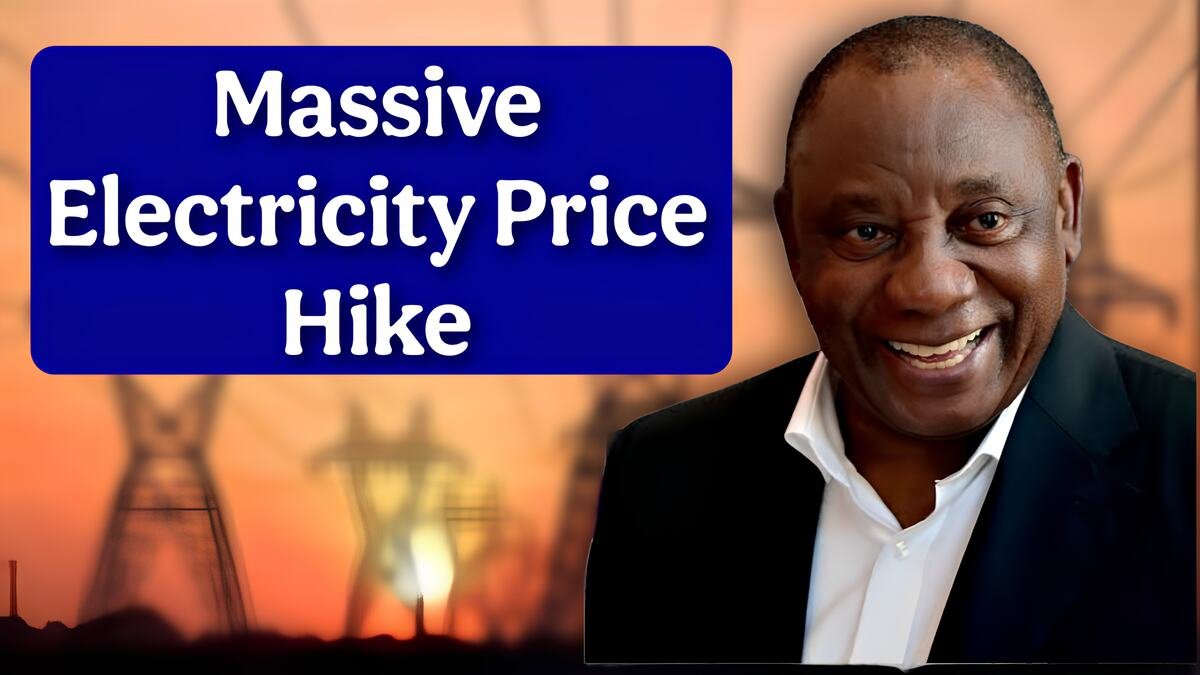Eskom tariff increase 2025 : South Africans are get ready for another steep rise in price electricity between 2024/2025, again, as it has been understood. With the price hikes that have just been approved by NERSA to mitigate Eskom’s financial problems, households and businesses are expected to feel the pinch. Here are the elements of the increase, implications, and practical tips for managing those rising costs.
Details Of Price Increase
NELSA has approved a major increase in electricity tariff rates for Eskom. This hike will be effective from April 2025. Results are thus expected to be an increase in prices by a maximum of 18.65% for most consumers. Reasons for the increase include:
- Eskom Debt: The utility provider is plagued with enormous debts and demands an increase in revenue.
- Infrastructure Upgrades: Investments must be made to modernize the aging electricity grid in South Africa.
- Load Shedding Mitigation: Money is also directed toward reducing the frequency and severity of load-shedding.
- Perhaps necessary, but these increases only add to the burdens of consumers already experiencing high inflation and unemployment.
Impact On Households And Businesses
The electricity price hike is expected to affect various aspects of daily life:
1. Increased Household Expenses
For an average household, the monthly electricity bill could increase by several hundred or more thousand rand, depending on consumption. Strain the family budget further, \ who will most likely result in some members cutting down on non-essential expenses.
2. Rising Business Costs
Businesses, such as small and medium-sized enterprises (SMEs), are experiencing higher operational costs. This could exacerbate inflation further as product and service prices will increase.
3. Job Losses And Economic Slowdown
Increased costs may force some firms to downsize or even close down completely; hence, job losses will be affected and decreased economic activity.
4. Gaping Inequality
These increases will hit hard the low-income households, who are already struggling to live above the poverty line.
Public And Government Response?
The South African government emphasizes these increases as necessary interventions for stabilizing Eskom and ensuring reliable, affordable electricity supply in the long term. However, the mass public outcry has been strong, as citizens and advocacy organizations have called for alternative measures, including: Increases in the subsidy levels for poor households; An expedited transition to renewable energy; Heightened anti-corruption and mismanagement measures within Eskom.
How To Cope With Rising Electricity Costs
Here are practical ways to save on electricity in the midst of these hikes:
- 1. Buy Energy Efficient Appliances – Use LED bulbs, energy refrigerators, and consume low electricity-requiring appliances.
- 2. Use Renewable Energy – Fit the house with solar panels or convert to solar geysers where feasible, as there are some government incentive schemes that help with off-setting such costs.
- 3. Monitor Electricity Usage – Record the usage and unplug devices when not in use. Smart meters can provide real-time consumption data.
- 4. Consume Energy at Non-Peak Times – Several municipalities have installed lowered tariffs during non-peak-usage hours. Realign your usage to these periods.
- 5. Investigate Load-Shedding Solutions – Invest in alternative power supply solutions, such as inverters or generators, to reduce dependence on the grid.
Looking Ahead
The hike in electricity prices has brought to the fore the need for urgent systemic reforms in the energy sector in South Africa. Tariff hikes by Eskom may provide temporary relief, but they do not replace the long-term solutions needed to eliminate the use of subsidies and re-arranging of the fundamentals to ensure affordable, sustainable energy for all.
Also Read: SASSA Grants 2025: All The Details On Payment Increases
